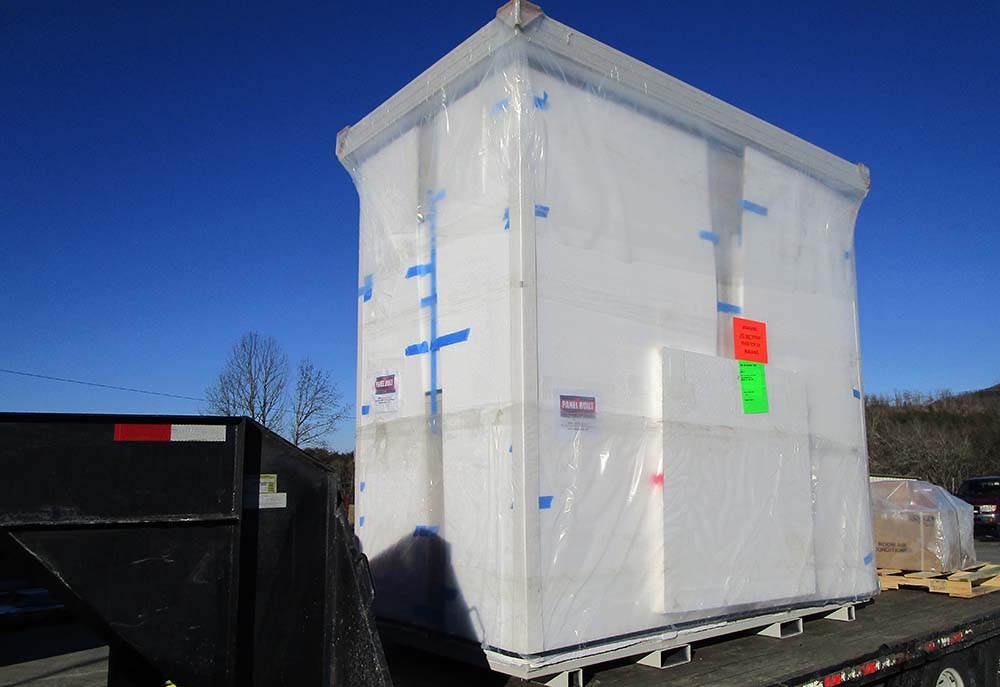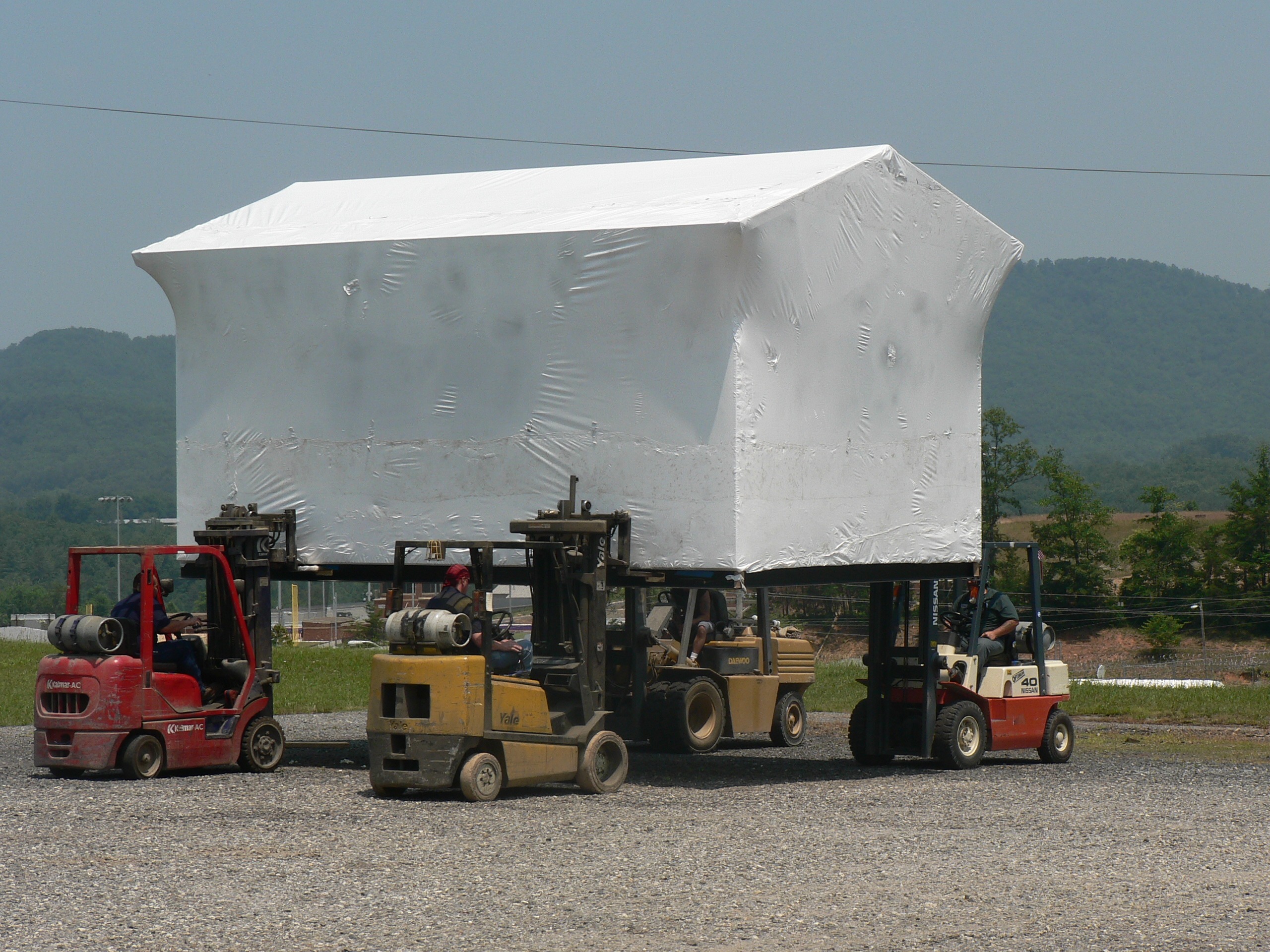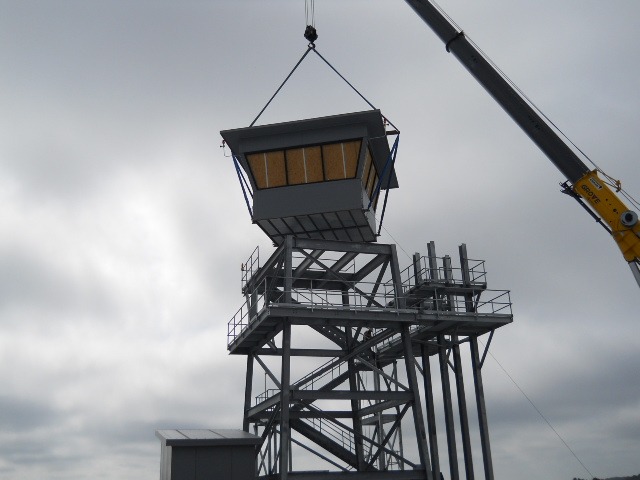How are Prefabricated Buildings Shipped?
Modular and prefabricated buildings have the distinct advantage of having the practically the entire structure manufactured off-site and ready to install at the job site. However, there is a very important step in-between these two processes, transportation. In many cases, Panel Built’s prefabricated buildings have to travel thousands of miles across the United States and internationally, ranging from urban to rural areas. Not all roadways are in the best of shape, so a great deal of effort is put into packaging and securing these structures. All of this is done with a main goal of delivering our quality product to our customers with full dependability and in pristine condition.
Inspection and Check List
To start the prefab shipping process (after all of the factory fabrication has been finished), the building will be fully inspected to ensure all aspects of the building is finished and there are no issues with the quality of the fabrication. If the building does not pass this inspection, the appropriate manager/supervisor will be notified to immediately fix the issue. Next, any additional materials needed to fully install the building will be gathered, packaged, and labeled to go with the building to the job site. This information is then double checked by the shipping supervisor to ensure accuracy. The additional materials will be strapped to the inside of the building, allowing for immediate and easy access to finish the installation of the structure. All of these measures are taken to maximize the overall quality of the project.
Also during this phase, the Shipping Supervisor will contact the customer or point of contact at the job site in order to reconfirm the buildings shipping schedule. This includes establishing the delivery requirements of the facility, the availability of their team, and the general understanding of the equipment required.
Packaging
Next up, the packaging stage of the building. The first thing our shipping department does when they take over the project is double check the building for issues and take pictures of the building to document any issues in quality (or lack thereof). Then the building will be wrapped in a plastic wrap covering with extra foam padding around the building for additional protection, especially around the window area and corners. The plastic wrap and padding provide a number of benefits to the building that pay off in transportation. With the unpredictability of the road and the inclement weather sometimes incurred, there can be a number of random obstacles thrown at it, sometimes literally. However, the plastic wrap does a great job of sealing off the building, offering dirt and moisture protection. Additionally, the wrap offers a resistance to outside tampering of the structure. All of this packaging is done in order to reduce the possibility of damage to the structure and lower the chance of project delays due to replacement pieces/parts.
Loading the Building on the Truck Bed
For the majority of Panel Built pre-assembled buildings, a single trained forklift driver and a spotter will be able to lift the building and carefully place it atop a flat-bed truck using our fixed, forkliftable base. However, there are instances where a building will be too big a load for one lift to handle. In the situation of multiple forklifts, coordination among your shipping team will be required. The structure will be lifted simultaneously by two or more forklifts then the structure will be placed on the bed of the truck. For buildings over 4000lbs with the two forklift slots, a high capacity forklift will be required in order to transport the structure.
Securing the Load
Another important step in the shipping process is securing the load to the truck. This can be done in a few different ways, depending on the building type and the base that is attached to it. With a pre-assembles using our forkliftable steel base, the structure will either use a series of straps or chains to secure the load, using a 4-point tie down system. Two straps are used on each side of the base, attaching to the forklift slots with one set pulling towards the front of the trailer and another pulling towards that back. With these two forces pulling against each other, the structure is locked in place. Similarly, when securing the load with chains, the chains will go through the forklift slots and feed through to the opposite side of the building. With one chain pulling forward and another pulling back, the building will be locked into place. Again, throughout the process of securing the load and placing the structure on the truck, the building will be photographed by the crew to make sure all protocols are followed in all steps.
Off-Loading
Similar to loading, the majority of structures will be able to be off-loaded from the truck using a single forklift and a trained forklift driver and spotter combo. In the instance the building requires multiple forklifts to load, the building will often have lifting rings attached to the roof, allowing for cranes to easily lift the building and guide it to the building’s install site, allowing for easy off-loading, installation, and anchoring.
Overall, there a number of different measures that are taken to ensure the prefabricated buildings our customers purchased are received in the exact condition they are expected to be in. Shipping large and units across the country will always have challenges, however, Panel Built, Inc. takes every possible measure to ensure its total quality.



